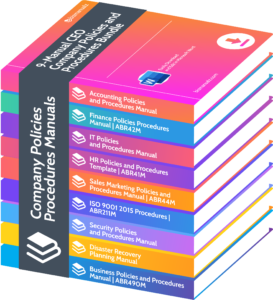COO Strategies Implementing Vendor Management Solutions

Welcome to a world where businesses thrive on strategic partnerships with vendors. This crucial aspect of operations can make or break a company’s success. Inefficient management of vendors can lead to increased costs, delays, and even reputational damage. Are you struggling with vendor management? Let us guide you through effective COO strategies for implementing vendor management solutions. COO Strategies Implementing Vendor Management Solutions.
What Are COO Strategies?
COO strategies encompass the plans and actions devised by a Chief Operating Officer to enhance operational efficiency, manage internal processes, and drive business growth. In the early 2000s, COO strategies shifted from a focus on cost-cutting to prioritizing innovation and agility, reflecting the changing business landscape.
Why Are COO Strategies Important for Businesses?
Why Are COO Strategies Important for Businesses?
COO strategies are essential for businesses to streamline operations, enhance efficiency, and mitigate risks. They enable optimized resource allocation, cost reduction, and improved decision-making.
Implementing vendor management solutions ensures transparency, accountability, and consistent performance. By aligning vendor management with organizational goals, businesses can achieve sustainable growth, resilience, and competitive advantage.
What Are the Different Types of COO Strategies?
As a Chief Operating Officer, it is crucial to have a well-defined strategy in place to effectively manage and optimize operations within a company. In this section, we will discuss the various types of COO strategies that can be implemented, including cost leadership, product differentiation, market segmentation, and market expansion. Each of these strategies offers unique benefits and considerations for a company to take into account when developing a successful vendor management solution.
1. Cost Leadership
Cost leadership is a business strategy that focuses on becoming the lowest-cost producer in the industry and can be achieved by following these steps:
- Implementing efficient production processes to minimize costs.
- Negotiating favorable deals with suppliers to obtain low-cost resources.
- Investing in technology to automate and streamline operations.
- Continuously reviewing and optimizing operational expenses.
2. Product Differentiation
- Identify target market segments.
- Analyze customer needs and preferences.
- Develop unique product features or attributes to achieve product differentiation.
- Create effective marketing strategies to highlight the distinctive aspects of the product and stand out in the market.
- Continuously innovate and improve the product to maintain its unique qualities and stay ahead of competitors.
3. Market Segmentation
- Divide the market into distinct groups based on different characteristics such as demographics, behavior, and needs.
- Identify the specific needs and preferences of each segment through the process of market segmentation.
- Create targeted marketing strategies and products tailored to each segment’s unique requirements.
- Implement effective communication channels to reach and engage with each segmented market effectively.
4. Market Expansion
Market expansion is a crucial process that involves taking strategic steps to increase a business’s market reach and customer base. This can be achieved by conducting thorough market research to identify potential new markets. It is also important to assess the competitive landscape in these target markets in order to understand the challenges and opportunities.
Developing a well-planned market entry strategy, taking into consideration factors such as distribution channels and local regulations, is essential. Additionally, investing in effective marketing and promotional activities is crucial for creating brand awareness in the new markets.
How Can COO Strategies Be Implemented?
As the COO of a company, it is crucial to have effective strategies in place to ensure the success of your organization. One key aspect of this is implementing vendor management solutions. In this section, we will discuss how COO strategies can be implemented in four essential steps.
We will explore the importance of identifying core competencies, analyzing the market and competitors, developing a strategic plan, and effectively communicating and aligning with other departments. Let’s dive into these steps and see how they can help your company thrive.
1. Identify Core Competencies
Identifying core competencies involves several key steps:
- Evaluate the current skills and expertise within the organization.
- Assess which competencies provide a competitive advantage.
- Analyze market demands and future trends to align competencies.
- Develop a plan to enhance existing strengths and build new competencies.
By identifying core competencies, businesses can focus on areas where they excel, enabling them to gain a competitive edge and drive success.
2. Analyze Market and Competitors
- Market Analysis: Evaluate market trends, customer preferences, and competitor strategies.
- Competitor Analysis: Identify key competitors, assess their strengths and weaknesses, and analyze their market positioning.
When conducting an analysis of the market and competitors, it is crucial to gather thorough data, utilize analytics tools, and stay informed about industry developments in order to make well-informed strategic decisions.
3. Develop a Strategic Plan
- Assess the current business situation, including strengths, weaknesses, opportunities, and threats.
- Define clear objectives and goals that align with the company’s mission and vision.
- Conduct a comprehensive analysis of the market, industry trends, and competitor strategies.
- Allocate resources effectively and efficiently to support the strategic initiatives.
- Create actionable strategies and tactics with specific timelines and responsibilities.
- Develop a Strategic Plan that outlines the company’s goals and objectives with a clear action plan.
4. Communicate and Align with Other Departments
- Establish Open Communication: Foster transparent and clear communication channels with other departments to effectively communicate and align strategies.
- Align Goals and Objectives: Ensure that the COO strategies are in line with the goals and objectives of other departments to promote collaboration and synergy.
- Collaborate on Implementation: Work together with other departments to implement COO strategies and achieve shared objectives.
- Regular Updates and Feedback: Provide regular updates and seek feedback from other departments to maintain alignment and make necessary adjustments for successful execution.
What Is Vendor Management?
What Is Vendor Management? Vendor management is the process of managing supplier relationships, ensuring the quality of products and services, and negotiating contracts and terms. This includes evaluating vendor performance, maintaining effective communication, and mitigating potential risks.
Pro-tip: It is important to regularly assess vendor performance in order to identify areas for improvement and strengthen partnerships.
Why Is Vendor Management Important for Businesses?
Why Is Vendor Management Important for Businesses? Vendor management is essential for businesses as it plays a vital role in ensuring cost-effectiveness, maintaining quality control, and adhering to regulations.
It helps streamline operations, enhance vendor performance, and mitigate risks. By effectively managing vendors, businesses can foster strong relationships, leading to successful partnerships and improved efficiency in their supply chain. In fact, studies have shown that efficient vendor management can reduce procurement costs by 25% and improve productivity by 20%.
What Are the Steps Involved in Implementing Vendor Management Solutions?
Implementing vendor management solutions can greatly benefit a company by streamlining processes and improving vendor relationships. To successfully implement these solutions, certain steps must be taken.
In this section, we will discuss the key steps involved in implementing vendor management solutions, including identifying and prioritizing vendors, developing performance metrics, negotiating contracts and service level agreements, monitoring and evaluating vendor performance, and continuously improving vendor relationships. By following these steps, companies can effectively manage their vendors and optimize their operations.
1. Identify and Prioritize Vendors
- Identify all current vendors and categorize them based on the importance of their products or services to your business.
- Prioritize vendors based on factors such as criticality, quality, pricing, and the strength of your relationship with them.
- Assess the performance history and reliability of each vendor.
- Consider the potential impact on your business if a vendor fails to deliver.
Pro-tip: Regularly reassess and update vendor priorities to align with changing business needs and market dynamics.
2. Develop Vendor Performance Metrics
- Identify Key Performance Indicators (KPIs) that are relevant to vendor performance, such as on-time delivery, quality, and cost-effectiveness.
- Establish clear benchmarks and targets for each KPI to accurately measure vendor performance.
- Utilize a balanced scorecard approach to assess various aspects of vendor performance, including financial, operational, and service-related metrics.
- Regularly review and update the vendor performance metrics to align with changing business needs and industry standards.
3. Negotiate Contracts and Service Level Agreements
- Understand Business Needs: Determine specific contract and service level agreement requirements based on business objectives.
- Evaluate Vendor Proposals: Consider vendors’ offers in terms of pricing, scope of services, and performance guarantees.
- Negotiate Contracts and Service Level Agreements: Engage in discussions with vendors to agree on contract terms, pricing, and service level commitments.
- Finalize Agreements: Document all negotiated terms, service level agreements, and responsibilities in a formal contract.
Fact: Effective negotiation can lead to an average of 18-20% in cost savings on contracts and service agreements.
4. Monitor and Evaluate Vendor Performance
- Establish Key Performance Indicators (KPIs) to measure vendor performance, aligning with business objectives.
- Regularly assess vendor performance against KPIs to ensure compliance and identify areas for improvement.
- Utilize balanced scorecards or vendor scorecards to comprehensively evaluate performance across various criteria.
- Provide constructive feedback to vendors based on performance evaluations, fostering collaboration and improvement.
5. Continuously Improve Vendor Relationships
- Regular Communication: Maintain open lines of communication with vendors to address issues and foster collaboration.
- Feedback Mechanism: Establish a feedback mechanism to gather insights on vendor performance and areas for improvement.
- Performance Evaluation: Continuously assess vendor performance against predefined metrics to identify strengths and areas needing enhancement.
- Collaborative Improvement: Collaborate with vendors to implement changes and enhancements that benefit both parties.
- Relationship Building: Invest in building strong and mutually beneficial relationships with vendors through transparency and trust.
- Continuously Improve Vendor Relationships: Strive to continuously improve relationships with vendors by implementing changes and enhancements that benefit both parties.
Frequently Asked Questions
 $
$
What are COO strategies for implementing vendor management solutions?
COO strategies refer to the various plans and actions implemented by a Chief Operating Officer (COO) to effectively manage and optimize vendor relationships. These strategies involve developing processes, setting performance metrics, and leveraging technology to improve vendor management.
Why is it important for companies to have vendor management solutions?
Vendor management solutions are crucial for companies as they help streamline the vendor selection and contracting process, ensure compliance with vendor agreements, and improve overall vendor performance. These solutions also help reduce costs and mitigate risks associated with vendor relationships.
What are some common challenges faced by companies in vendor management?
Some common challenges faced by companies in vendor management include lack of visibility into vendor performance, difficulties in managing multiple vendors, and inadequate technology and processes to support effective vendor management. These challenges can result in poor vendor relationships and increased costs for the company.
What are the key components of an effective vendor management solution?
An effective vendor management solution should have the following key components:
- Vendor selection and evaluation processes
- Contract management tools and procedures
- Performance metrics and reporting mechanisms
- Risk management and mitigation strategies
- Technology platforms to support vendor management
How can COOs ensure successful implementation of vendor management solutions?
To ensure successful implementation of vendor management solutions, COOs should involve all relevant stakeholders, clearly define roles and responsibilities, and establish a comprehensive communication plan. They should also regularly review and assess the effectiveness of the solution and make necessary adjustments as needed.
What are some best practices for COOs in vendor management?
Some best practices for COOs in vendor management include establishing a clear vendor management strategy, conducting thorough due diligence when selecting vendors, regularly monitoring vendor performance, and fostering open and transparent communication with vendors. It is also important for COOs to stay updated on industry trends and developments in vendor management to continuously improve their strategies.

















Leave a Reply